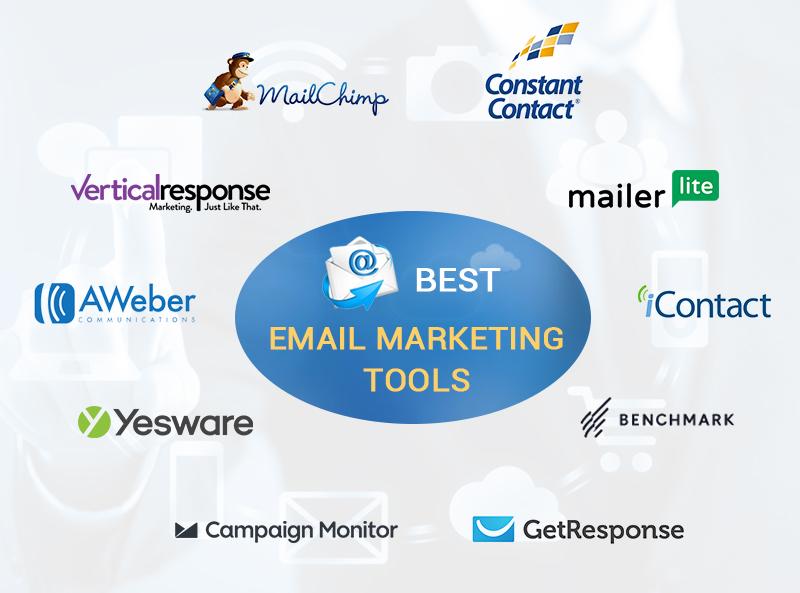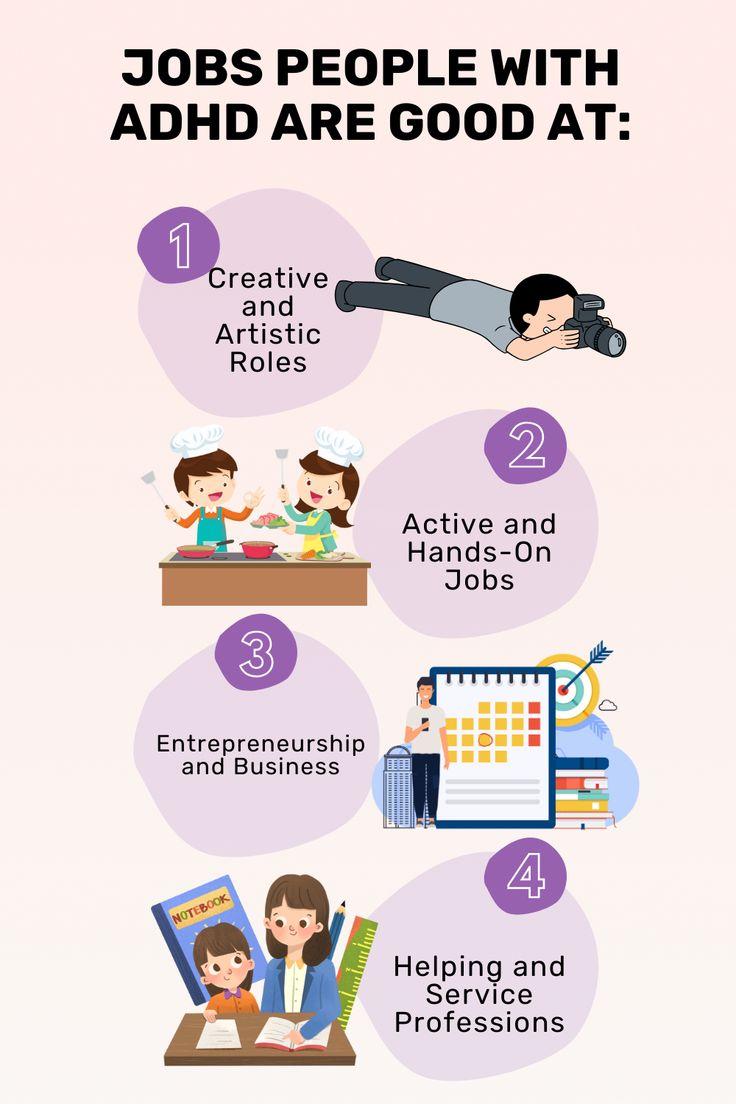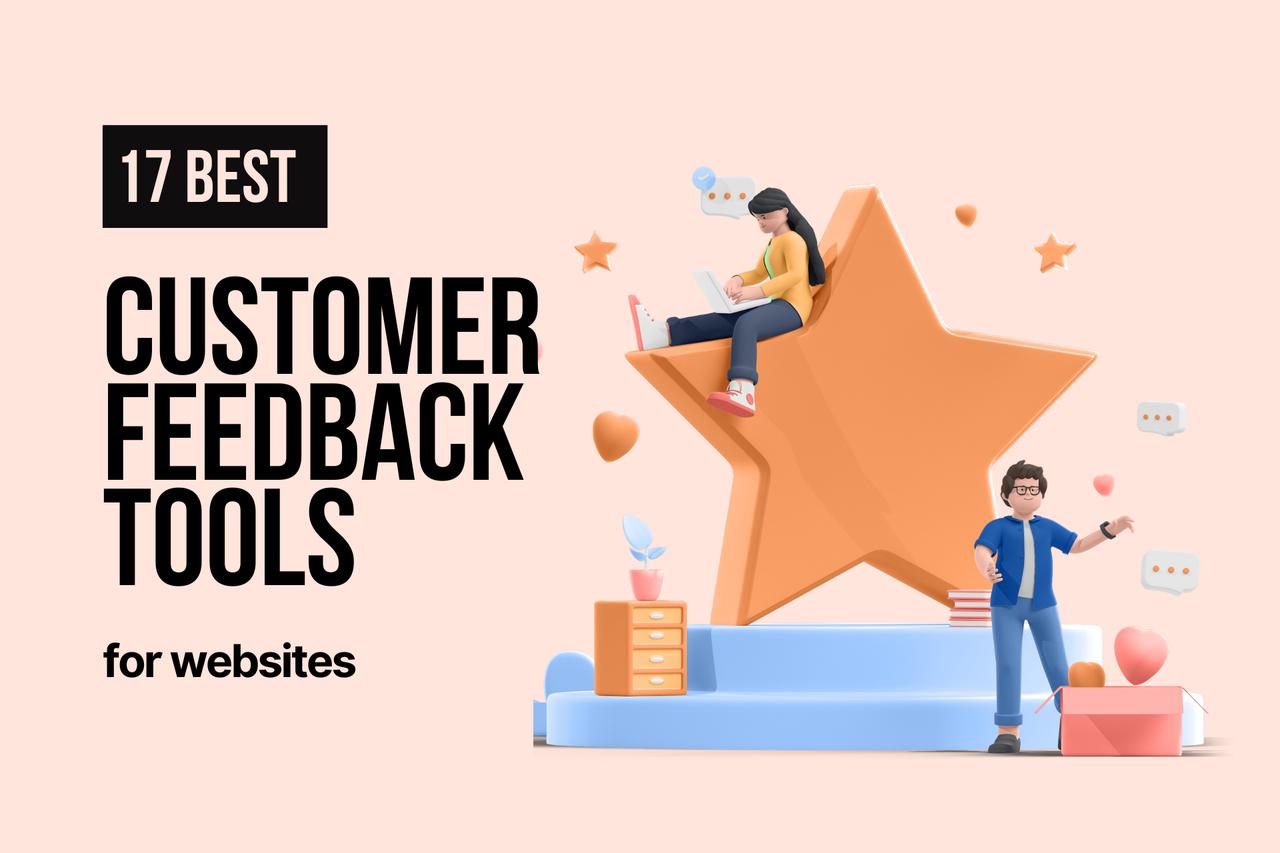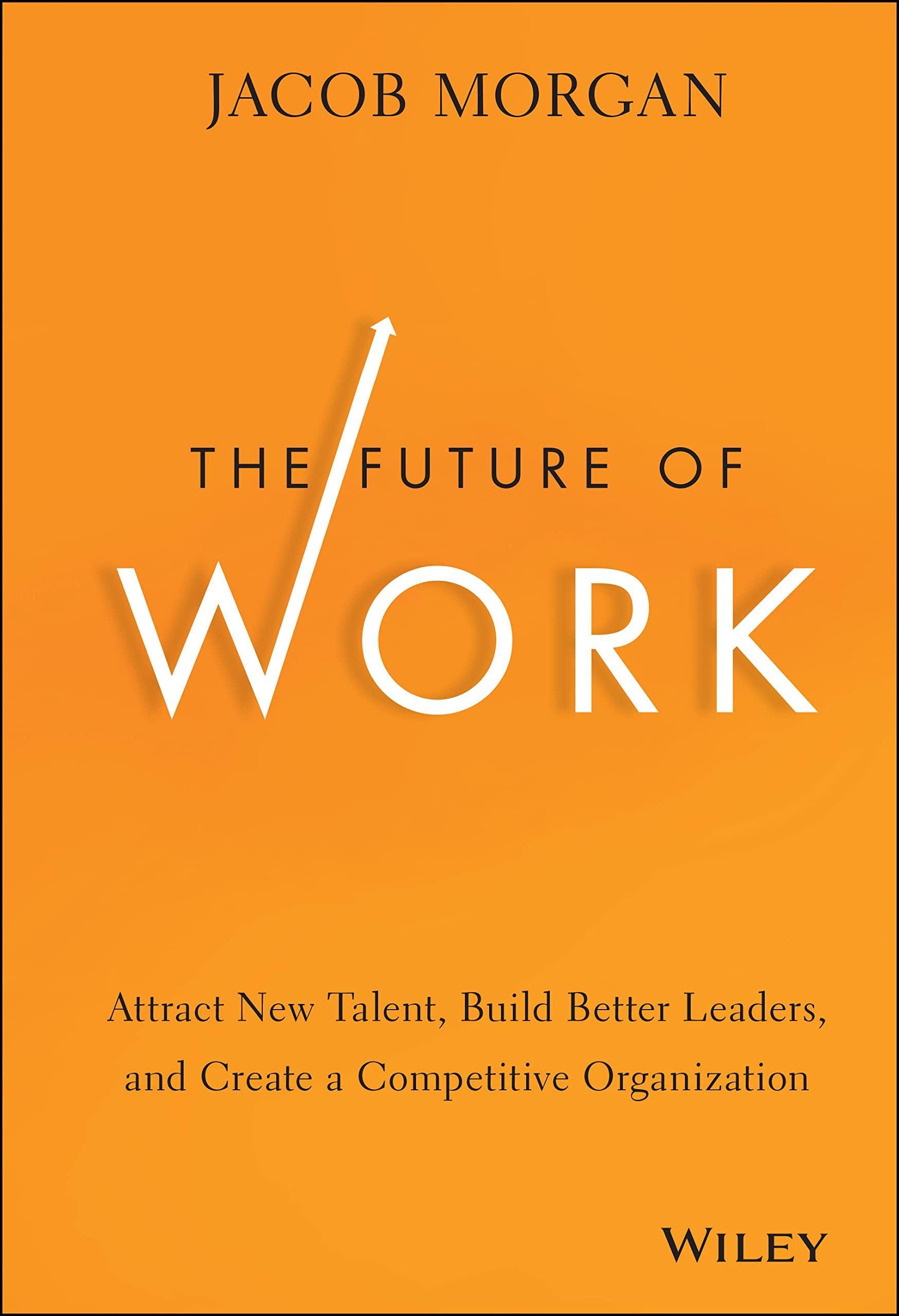
As we navigate the ever-changing landscape of the workplace, it’s clear that the future of work is not just a distant concept—it’s unfolding right before our eyes. With advances in technology, shifts in employee expectations, and the rise of remote work, the way we approach our jobs is evolving at an unprecedented pace. But here’s the catch: staying ahead of the curve requires more than just awareness; it demands proactive adaptation. In this article, we’ll explore 11 key trends that are shaping the future of work and provide you with practical strategies to not only survive but thrive in this new environment. Whether you’re a business leader, an employee, or someone just entering the workforce, understanding these trends will empower you to make informed decisions and set yourself up for success. Let’s dive in and discover how you can prepare for the work world of tomorrow!
The Rise of Remote Work and What It Means for You
The surge in remote work has transformed the way we think about our jobs, leading to a significant shift in workplace culture and expectations. This change isn’t just a temporary response to global events; it’s a fundamental evolution that is reshaping our professional landscapes. Understanding this shift is crucial for anyone looking to thrive in the modern workforce.
One of the most compelling aspects of remote work is the increased flexibility it offers. Employees are no longer tied to rigid schedules or specific locations, allowing for a better work-life balance. This flexibility can lead to higher job satisfaction and improved productivity. Organizations that embrace this model often notice a boost in employee morale and retention rates.
However, the rise of remote work also brings challenges. Communication can become fragmented, and the sense of isolation may creep in for some workers. To mitigate these issues, companies are investing in tools and technologies that facilitate collaboration, such as:
- Video Conferencing Software – Tools like Zoom and Microsoft Teams help maintain face-to-face interactions.
- Project Management Platforms – Solutions like Trello and Asana keep teams aligned and projects on track.
- Instant Messaging Apps - Slack and similar platforms foster quick communication and camaraderie among team members.
Moreover, the shift towards remote work is not just a trend but a significant democratization of talent. Organizations now have access to a global talent pool, enabling them to hire the best individuals regardless of geographic limitations. This can lead to more diverse teams, which research shows often outperform their more homogenous counterparts. The implications for both employers and job seekers are profound:
| For Employers | For Job Seekers |
|---|---|
| Access to a wider range of skills and experiences | Increased opportunities regardless of location |
| Ability to build more diverse teams | Potential for higher salaries and benefits |
| Reduced overhead costs | More flexibility in work arrangements |
As remote work solidifies its place in the future of work, the importance of upskilling cannot be overstated. With technological advancements rapidly evolving, staying relevant in your field means continually enhancing your skill set. Whether it’s through online courses, webinars, or professional certifications, investing in your personal and professional development is essential.
Lastly, embracing a results-oriented mindset is key to thriving in a remote work environment. Traditional metrics of success, such as hours logged, are giving way to a focus on outcomes and deliverables. Employees who adapt to this mindset will not only excel in their current roles but will also be well-positioned for future career advancements. The future is bright for those who are willing to adapt, learn, and grow in this new era of work.

Embracing Flexibility: The Key to Employee Satisfaction
In today’s fast-paced world, the traditional 9-to-5 work model is rapidly becoming a relic of the past. Employees are increasingly seeking flexibility in their work arrangements, and organizations that embrace this shift are likely to see higher levels of satisfaction and productivity. Flexibility isn’t just a perk; it’s becoming a necessity in attracting and retaining top talent.
Studies have shown that when employees have the option to choose their working hours and location, they report higher job satisfaction. This sense of autonomy allows individuals to balance their professional and personal lives more effectively, leading to better mental health and reduced stress levels. Companies that prioritize flexible work policies can foster a more engaged workforce.
Consider implementing a variety of flexible work arrangements, such as:
- Remote work options: Allow employees to work from home or other locations.
- Flexible hours: Enable staff to choose their starting and ending times.
- Compressed workweeks: Offer the chance to complete a full-time workload in fewer days.
Moreover, flexibility can also extend to the way teams collaborate. Embracing asynchronous communication tools allows employees to connect and collaborate without the constraints of time zones or schedules. This not only enhances productivity but also gives team members the freedom to work during their most productive hours.
To ensure a smooth transition to a more flexible work environment, consider providing training and resources on effective remote work practices. Here are some topics to include:
- Time management: Teach employees how to manage their time effectively while working remotely.
- Digital collaboration tools: Familiarize everyone with platforms like Slack, Zoom, and Trello.
- Work-life boundaries: Encourage staff to set boundaries to maintain a healthy work-life balance.
Another critical aspect of flexibility is measuring performance based on outcomes rather than hours worked. Implementing a results-oriented work environment (ROWE) allows employees to focus on what they achieve rather than how long they spend at their desks. This shift can lead to increased motivation and efficiency, as employees take ownership of their work.
As organizations navigate this transformation, it’s essential to gather feedback from employees regularly. Understanding their preferences and challenges can guide adjustments to policies and practices, ensuring that the flexibility offered aligns with their needs. Conducting surveys or holding open forums can provide valuable insights into how to create a more satisfying work environment.
Ultimately, embracing flexibility not only enhances employee satisfaction but also cultivates a culture of trust and respect. When employees feel supported in their personal and professional lives, they are more likely to be loyal advocates for your organization, driving success from within.

The Shift Towards Digital Collaboration Tools
As organizations worldwide adapt to the evolving workplace landscape, the rise of digital collaboration tools has become more pronounced. These platforms are not just helping teams work together; they are reshaping the way we think about productivity and teamwork. As remote work continues to gain traction, businesses must embrace these tools to foster engagement and maintain efficiency.
Digital collaboration tools offer a myriad of functionalities that cater to different aspects of teamwork. Here are some of the key components that are driving this shift:
- Real-time Communication: Instant messaging and video conferencing capabilities allow teams to connect effortlessly, regardless of physical location.
- Document Sharing and Co-editing: Platforms like Google Workspace and Microsoft 365 enable multiple users to collaborate on documents simultaneously, streamlining workflows.
- Project Management Features: Tools such as Asana or Trello help teams track progress, assign tasks, and keep projects organized.
- Integrated Apps: Many collaboration tools now offer integrations with other applications, making it easier to consolidate workflows and reduce tool fatigue.
Moreover, the adaptability of these tools is a game-changer. Teams can customize their digital workspace to fit specific project needs, enabling a more tailored approach to collaboration. This transition not only improves efficiency but also enhances employee satisfaction, as team members feel empowered to work in a way that suits them best.
In addition to efficiency and satisfaction, digital collaboration tools also play a critical role in promoting inclusivity. Remote teams can bring together diverse voices and perspectives, leading to more innovative solutions and ideas. This inclusivity can ultimately drive better business outcomes, as a variety of viewpoints can enhance problem-solving and creativity.
To effectively prepare for the future of work, organizations should consider the following strategies:
- Invest in Training: Ensure that your team is well-equipped to use these tools effectively. Regular training sessions can keep skills sharp and encourage collaboration.
- Encourage Feedback: Create an open dialogue about the tools in use. Employee feedback can provide insights into what’s working and what isn’t, leading to continuous improvement.
- Foster a Collaborative Culture: Promote a culture that values teamwork and collaboration. Recognition and reward systems can reinforce this behavior.
As we move further into this digital age, the integration of collaboration tools will not only be beneficial but essential for organizations aiming to thrive. Embracing this shift will empower teams to work smarter, connect deeper, and innovate better than ever before.
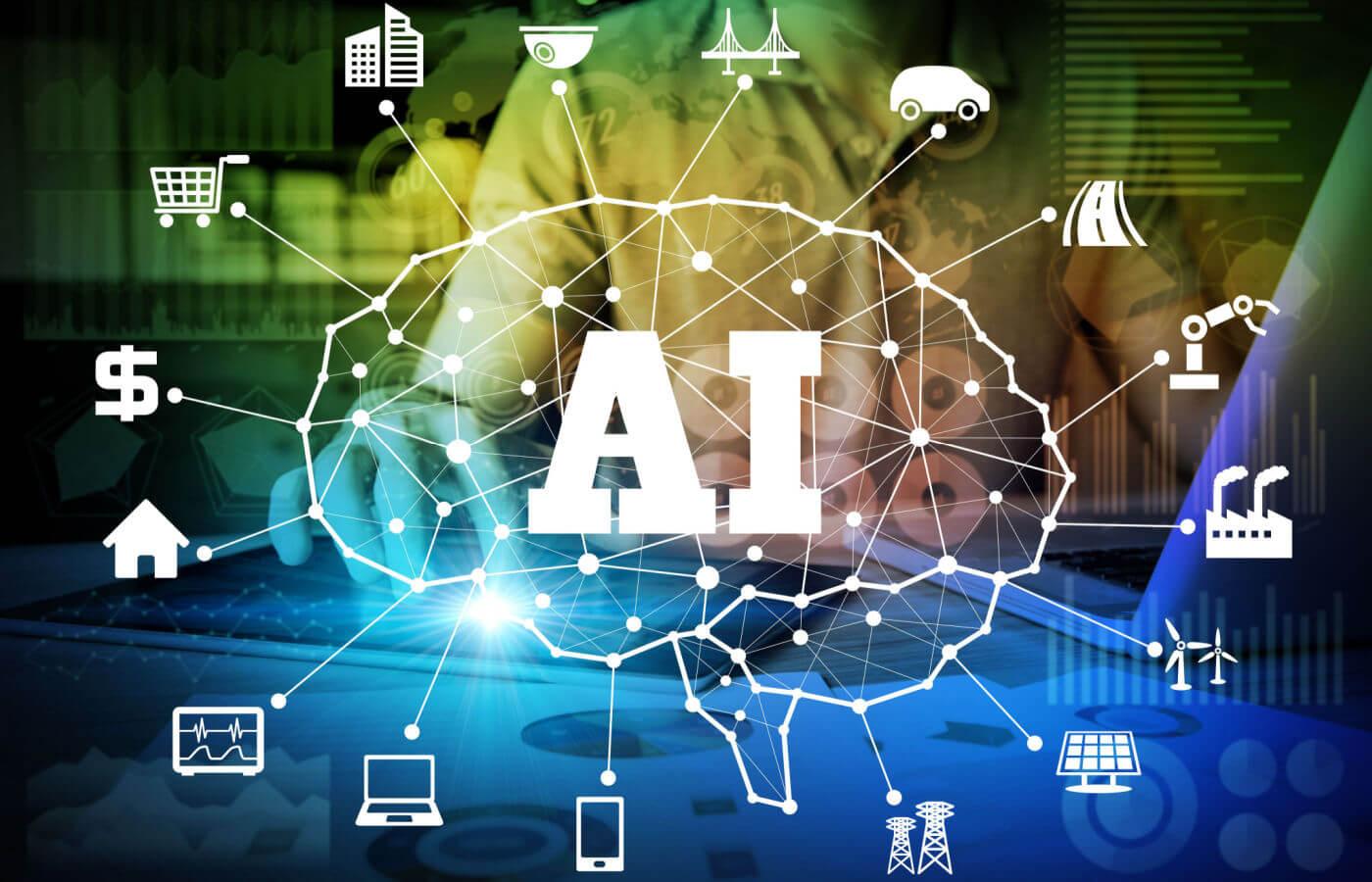
How AI is Transforming Job Roles and Responsibilities
As artificial intelligence continues to evolve, its impact on the workplace is becoming increasingly profound. Job roles and responsibilities are undergoing significant transformations, reshaping how we view work across various sectors. One of the most notable changes is the shift towards automation of repetitive tasks, allowing employees to focus on more strategic and creative endeavors.
One key area where AI is making waves is in data analysis. Specialized AI tools can process vast amounts of information in mere seconds, uncovering insights that would take humans hours or even days to analyze. This shift not only enhances productivity but also allows professionals to make more informed decisions quickly. Teams that once relied heavily on manual data processing are now empowered to focus on interpreting results and strategizing based on AI-generated insights.
Moreover, AI is redefining customer service roles. With chatbots and virtual assistants, businesses can provide 24/7 support, addressing customer inquiries instantly. This technology doesn’t just alleviate pressure on human agents; it also allows them to handle more complex issues. As a result, the role of customer service representatives is shifting from a focus on basic inquiries to a concentration on relationship building and problem-solving.
In addition to enhancing efficiency, AI is creating entirely new job categories. From AI ethicists to machine learning engineers, the demand for professionals skilled in AI technologies is skyrocketing. Companies are now looking for individuals who can not only implement AI solutions but also ensure they align with ethical standards and business objectives. This evolution necessitates a shift in how educational institutions approach curriculum development, preparing students for futures that integrate AI technologies.
Collaboration tools powered by AI are also changing team dynamics. Intelligent software can analyze team interactions, suggest optimal communication methods, and even recommend project management strategies tailored to specific group dynamics. This allows teams to work more cohesively and effectively, leveraging AI to enhance collaboration rather than replace the human touch that is essential for creativity and innovation.
The rise of remote work has further accelerated the integration of AI into job roles. Tools that facilitate remote collaboration and project management are becoming smarter, learning from user behavior to optimize workflows. Employees can now enjoy more flexibility, while companies benefit from an expanded talent pool unbounded by geographical constraints.
To prepare for these changes, professionals should focus on continuous learning. Embracing lifelong learning enables individuals to stay relevant in an ever-evolving job market. This could mean taking online courses, attending workshops, or participating in AI-focused seminars. Additionally, developing soft skills such as emotional intelligence and adaptability will be crucial, as these human traits complement the analytical power of AI.
Ultimately, embracing AI isn’t just about adopting new technologies; it’s about rethinking how we approach work. As roles evolve, it’s essential for both employees and employers to remain agile, adapting to the new landscape shaped by AI. By fostering a culture of innovation and responsiveness, organizations can harness the full potential of AI, paving the way for a successful future.
Upskilling and Reskilling: Staying Relevant in a Changing Landscape
In today’s fast-paced work environment, adapting to change is no longer optional—it’s essential. As industries evolve and new technologies emerge, the need for continuous learning becomes paramount. Upskilling and reskilling are not just buzzwords; they are crucial strategies for maintaining relevance in a competitive job market.
Upskilling refers to enhancing your current skills, allowing you to perform your present job more effectively. On the other hand, reskilling involves learning new skills to transition into different roles or industries altogether. Both approaches offer unique advantages, and combining them can create a robust career development plan.
Here are some key strategies to implement:
- Embrace Lifelong Learning: Make a commitment to never stop learning. Online courses, webinars, and workshops are excellent resources for both upskilling and reskilling.
- Network Actively: Surround yourself with professionals who challenge and inspire you. Networking can lead to mentoring opportunities that provide invaluable insights and guidance.
- Stay Informed: Regularly read industry publications and follow thought leaders on social media. Staying informed about trends and technologies can help you anticipate necessary skills.
- Leverage Online Platforms: Utilize platforms like Coursera, Udacity, or LinkedIn Learning to find courses that align with your career goals.
Another effective approach is to create a personal development plan. A structured plan helps you identify your strengths and areas for improvement, set clear learning goals, and track your progress. Here’s a simple table to illustrate how you can structure your plan:
| Skill/Area | Current Level | Goal | Resources | Timeline |
|---|---|---|---|---|
| Data Analysis | Basic | Intermediate | Online course, books | 3 months |
| Project Management | Intermediate | Advanced | Certification program | 6 months |
| Public Speaking | Basic | Proficient | Workshops, local meetups | 4 months |
Flexibility is also key. The landscape of work is shifting rapidly, and the skills that are in demand today may change tomorrow. Be prepared to pivot and adapt your learning path as new opportunities arise. Consider gaining experience in emerging fields like artificial intelligence, data science, and renewable energy, which are projected to have significant growth in the coming years.
Lastly, don’t hesitate to seek feedback. Regularly check in with your peers, supervisors, or mentors to gauge your progress. Constructive criticism can provide new perspectives and direct you toward areas you may not have considered for further development.
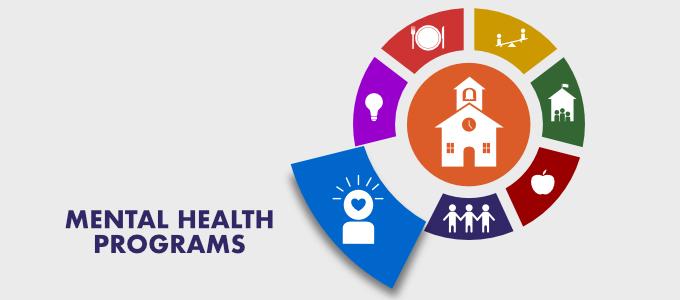
The Importance of Mental Health Support in the Workplace
The modern workplace is evolving rapidly, and with this transformation comes an increased awareness of the need for mental health support among employees. Companies are recognizing that a healthy workforce is not only essential for productivity but also for fostering a positive organizational culture. By prioritizing mental health, businesses can create an environment where employees feel valued, engaged, and motivated to perform at their best.
One of the key reasons mental health support is critical in the workplace is the profound impact it has on overall employee well-being. When organizations invest in mental health initiatives, they contribute to:
- Reduced absenteeism: Employees who receive adequate support are less likely to take time off due to stress or burnout.
- Increased productivity: A mentally healthy workforce tends to be more focused and efficient, leading to higher quality work.
- Enhanced creativity: When employees feel mentally supported, they are more likely to think outside the box and contribute innovative ideas.
- Improved morale: A supportive environment fosters camaraderie and job satisfaction, leading to lower turnover rates.
To effectively support mental health in the workplace, organizations can implement various strategies. Here are some impactful approaches:
- Offer training programs: Equip managers with the skills to recognize mental health issues and provide appropriate support.
- Establish Employee Assistance Programs (EAPs): Provide access to mental health resources, counseling, and support services.
- Encourage open communication: Foster a culture where employees feel safe discussing mental health without fear of stigma or repercussions.
- Promote work-life balance: Encourage flexible working arrangements and respect employees’ personal time.
Additionally, regular mental health awareness campaigns can normalize conversations around mental well-being. Organizing workshops, seminars, or even casual lunch-and-learns can serve as platforms for education and support. These initiatives show employees that their mental health matters and that they are not alone in facing challenges.
| Benefit of Mental Health Support | Impact on Workplace |
|---|---|
| Employee Retention | Lower turnover rates and reduced hiring costs |
| Team Collaboration | Stronger relationships and teamwork |
| Company Reputation | Attract top talent and enhance brand image |
Understanding the role of mental health in the workplace is essential for navigating the future of work. As companies embrace these trends, they must commit to creating supportive environments that prioritize employee well-being. By doing so, organizations will not only thrive but also foster a culture of care that resonates throughout the entire workforce.
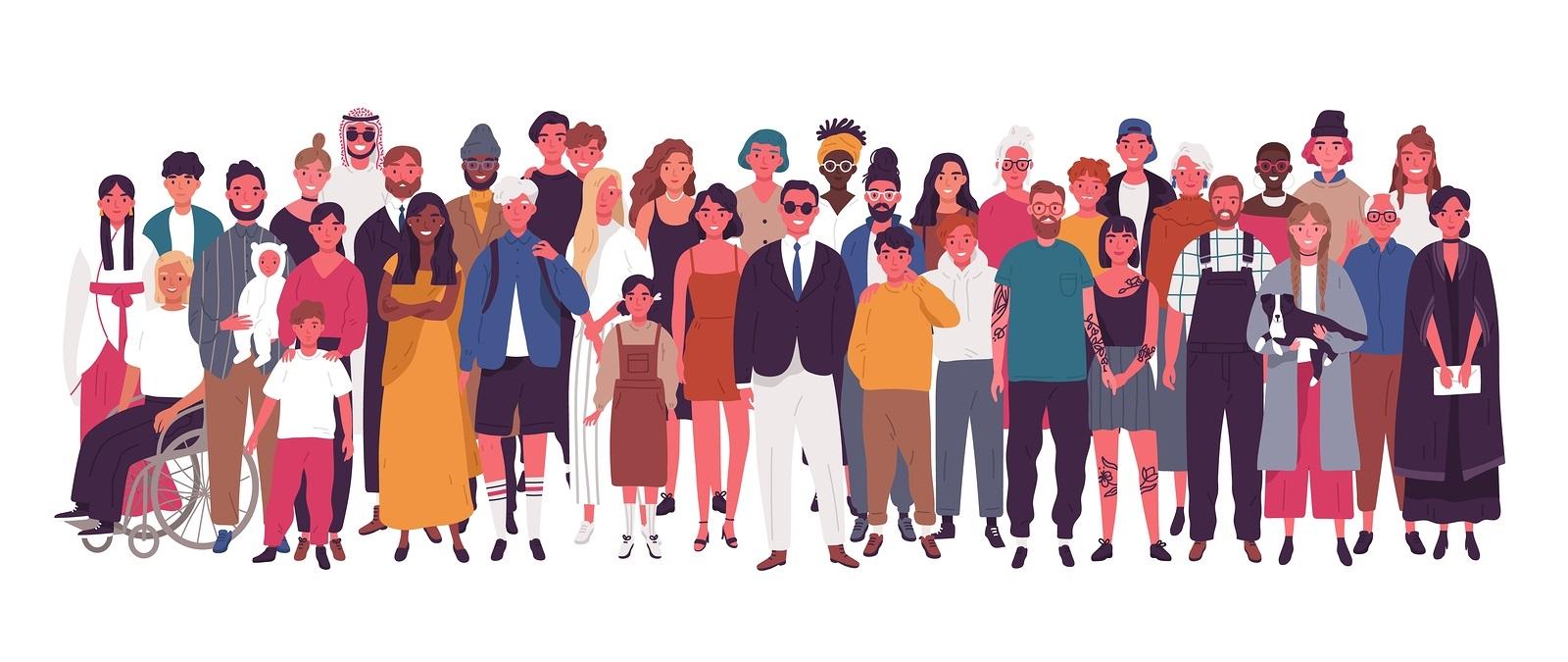
Diversity and Inclusion as a Business Imperative
In today’s rapidly evolving business landscape, diversity and inclusion are no longer just buzzwords—they are essential components of a thriving organization. Companies that actively embrace a diverse workforce not only foster innovation and creativity but also enhance their overall performance. Consumers and clients are increasingly favoring brands that prioritize inclusivity, making it a business imperative rather than an optional strategy.
Research has consistently shown that diverse teams outperform their peers. This is largely because varied perspectives lead to enhanced problem-solving and decision-making. When individuals from different backgrounds come together, they bring unique insights that can spark groundbreaking ideas. As a result, organizations that cultivate diversity not only unlock new opportunities but also drive better results.
To effectively harness the power of diversity, companies must create an inclusive culture where every employee feels valued and empowered to contribute. This can be achieved through several key practices:
- Implementing bias training: Educating employees about unconscious biases can help create a more equitable workplace.
- Encouraging open dialogue: Establishing platforms for employees to share their experiences fosters understanding and collaboration.
- Setting measurable goals: Companies should track diversity metrics to gauge progress and hold themselves accountable.
- Creating mentorship programs: Pairing diverse employees with mentors can help navigate career progression and enhance retention.
Moreover, inclusive hiring practices are essential in building a workforce that reflects diverse demographics. This involves expanding recruitment efforts to reach underrepresented groups and ensuring job descriptions are written in a way that appeals to a broad audience. Beyond hiring, it’s critical to establish clear pathways for career advancement that empower all employees to reach their full potential.
Here’s a quick look at some compelling data that underscores the business case for diversity:
| Statistic | Impact |
|---|---|
| Companies with diverse leadership teams report 19% higher revenue | Enhanced profitability |
| Inclusive companies are 1.7 times more likely to be innovation leaders in their market | Boosted innovation |
| Diverse teams are 35% more likely to outperform their competitors | Improved performance |
As we progress into the future of work, it is evident that diversity and inclusion will play an integral role in shaping organizational success. Companies that take proactive steps to prioritize these values will not only attract top talent but also build stronger relationships with clients and stakeholders. In an increasingly interconnected world, embracing diversity is not just a moral imperative but a strategic advantage.
Creating a Culture of Trust and Autonomy
In a rapidly evolving workplace, fostering a climate where employees feel trusted and empowered is essential for sustained success. As businesses adapt to modern challenges, cultivating a culture of trust and autonomy becomes a strategic advantage, leading to heightened employee engagement and productivity.
To establish this culture, organizations should prioritize open communication. Encouraging transparent dialogue helps build trust, as employees feel their voices are heard. Consider implementing regular check-ins or feedback sessions that allow team members to express their ideas and concerns. This not only enhances trust but also promotes a sense of belonging.
Another vital element is granting employees the autonomy to make decisions regarding their work. By allowing team members to take ownership of their projects, you not only boost their confidence but also enhance innovation. Here are a few strategies to promote autonomy:
- Empower decision-making: Let employees take the lead on their tasks and encourage them to propose solutions to challenges.
- Set clear expectations: Provide guidelines and goals while allowing flexibility in how tasks are completed.
- Recognize achievements: Celebrate successes to reinforce the positive impact of autonomy and trust.
Implementing flexible work arrangements can further reinforce this culture. As employees seek a better work-life balance, consider offering options such as remote work or flexible hours. This not only demonstrates trust in their ability to manage their responsibilities but also signifies an understanding of their individual needs.
Moreover, investing in training and development plays a pivotal role in creating a trusting environment. When employees see that their organization is committed to their growth, they are more likely to reciprocate with loyalty and high performance. Consider creating personalized development plans that align with both organizational goals and individual aspirations.
it’s crucial to lead by example. Leadership should embody the principles of trust and autonomy. When leaders demonstrate trust in their teams, it sets a precedent for the entire organization. Encouraging vulnerability and sharing stories of challenges and successes can help humanize leadership, fostering deeper connections with employees.
| Action | Benefit |
|---|---|
| Open Communication | Builds trust and engagement |
| Empower Decision-Making | Encourages innovation and ownership |
| Flexible Work Options | Enhances work-life balance |
| Personal Development Plans | Increases loyalty and performance |
is not merely a trend but a necessity in today’s workplace landscape. By implementing these practices, organizations can build resilient teams ready to tackle future challenges while thriving in an environment where they feel valued and empowered.
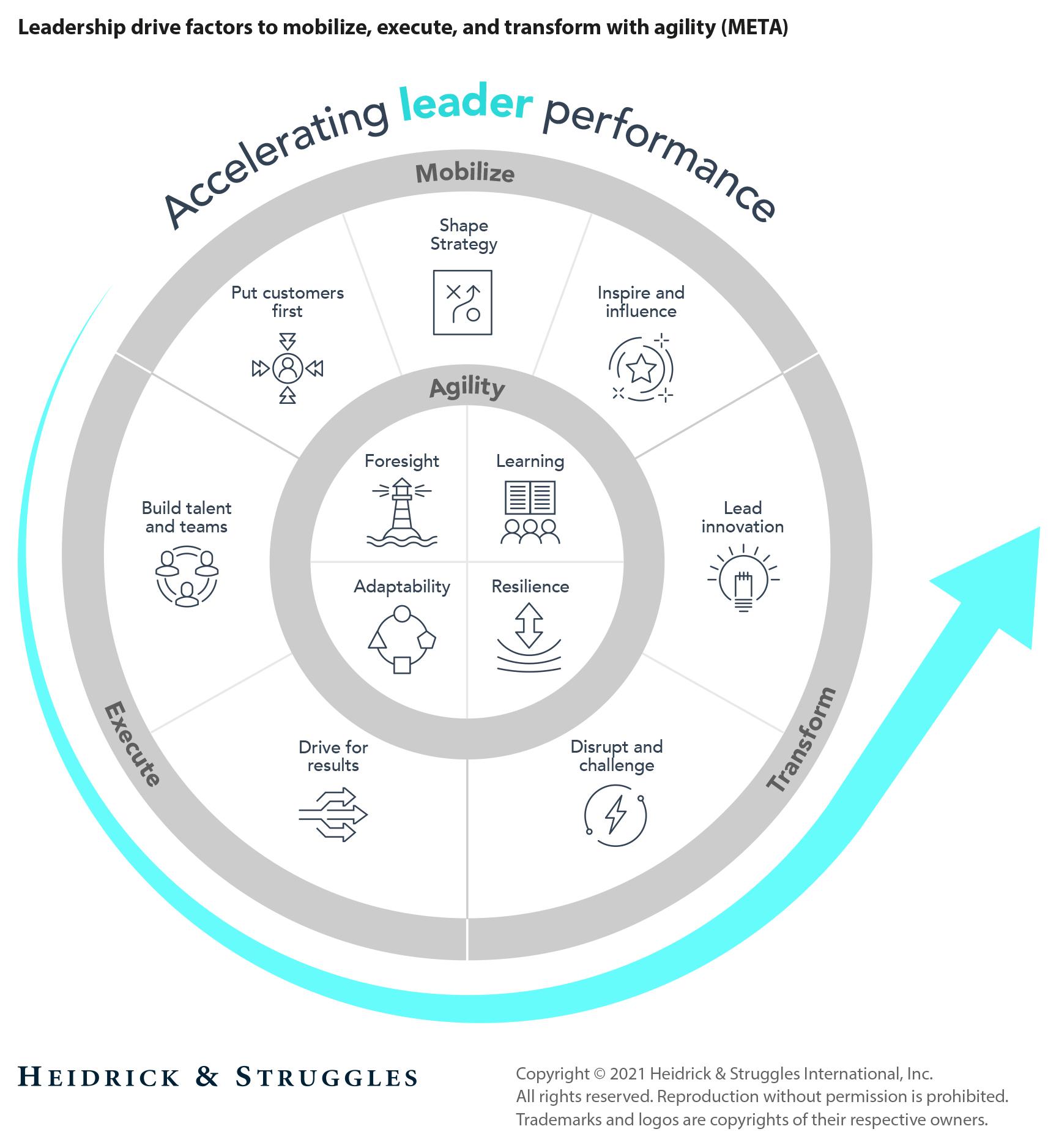
The Future of Leadership in a Virtual World
As we navigate the complexities of a virtual world, leadership is evolving in ways we never anticipated. The traditional model of leadership, characterized by in-person interactions and a top-down approach, is rapidly giving way to a more fluid and collaborative style. Leaders of the future must adapt to this changing landscape, embracing technology and fostering a culture of inclusivity and empowerment.
In this new environment, the effectiveness of a leader is often measured by their ability to connect with team members regardless of physical distance. Empathy and emotional intelligence are now at the forefront of leadership skills. Leaders who prioritize understanding the personal challenges of their team members can cultivate a supportive atmosphere that fosters loyalty and productivity.
Moreover, communication is paramount in virtual settings. Clear, consistent, and transparent communication not only keeps remote teams aligned but also builds trust. Leaders should leverage various tools and platforms to ensure their messages resonate and reach everyone effectively, eliminating silos that can occur in remote work environments.
Another trend is the shift towards results-oriented performance metrics rather than hours logged. Leaders will need to develop frameworks that focus on outcomes, allowing employees the flexibility to manage their own time while being accountable for their results. This shift can enhance productivity, as it empowers individuals to work in ways that suit their personal styles and circumstances.
Additionally, as organizations continue to expand their global reach, cultural competence becomes increasingly vital. Leaders must be equipped to manage diverse teams and recognize the unique contributions of different cultural perspectives. This not only enriches problem-solving but also fosters innovation by incorporating a variety of viewpoints.
Training and development are essential for future leaders. Organizations should invest in continuous learning opportunities, empowering leaders to evolve alongside their teams. This might include workshops on virtual leadership, emotional intelligence, and effective communication strategies, ensuring leaders are not just reactive but proactive in their approach.
| Leadership Skills | Importance in Virtual Settings |
|---|---|
| Empathy | Builds trust and loyalty among remote teams |
| Effective Communication | Ensures alignment and transparency in goals |
| Cultural Competence | Enhances innovation through diverse perspectives |
| Results Orientation | Promotes accountability and productivity |
as we look toward the future, a growth mindset will be crucial. The ability to embrace change, learn from failures, and adapt strategies in real-time will set successful leaders apart. By fostering an environment where experimentation is encouraged and creativity thrives, leaders can steer their teams towards greater achievements, even in the face of uncertainty.
Navigating Cybersecurity in a Remote Environment
In today’s digital landscape, the shift to remote work has transformed the way organizations approach cybersecurity. With employees accessing corporate networks from various locations, it’s essential to create a robust cybersecurity framework that can adapt to this new paradigm. Here are key strategies to enhance your cybersecurity posture in a remote environment:
- Implement Multi-Factor Authentication (MFA): Adding an extra layer of security ensures that even if passwords are compromised, unauthorized access is still thwarted.
- Regularly Update Software: Keeping operating systems and applications updated helps to patch vulnerabilities that attackers might exploit.
- Conduct Cybersecurity Training: Equip your workforce with knowledge about phishing attacks and safe internet practices to minimize risks.
- Use a Virtual Private Network (VPN): A VPN encrypts internet traffic, securing data transmitted over public networks.
Organizations must also pay attention to the devices being used. Employees often use personal devices for work tasks, which can pose significant risks. Establishing a clear policy for Bring Your Own Device (BYOD) can mitigate these risks:
| BYOD Policy Components | Purpose |
|---|---|
| Device Registration | Track all devices accessing the network. |
| Data Encryption | Protect sensitive information on personal devices. |
| Access Controls | Limit access based on user roles and responsibilities. |
| Remote Wipe Capability | Remove data from lost or stolen devices. |
Another critical aspect is the awareness of potential threats. Cybercriminals are constantly evolving their tactics, making it necessary for organizations to stay ahead of the curve. Regular vulnerability assessments and penetration testing can help identify weaknesses before they are exploited.
Lastly, fostering a culture of cybersecurity is vital. Encourage employees to report suspicious activities without fear of repercussions. Establishing a clear communication channel for reporting can enhance the overall security environment, making everyone a guardian of the organization’s digital assets.
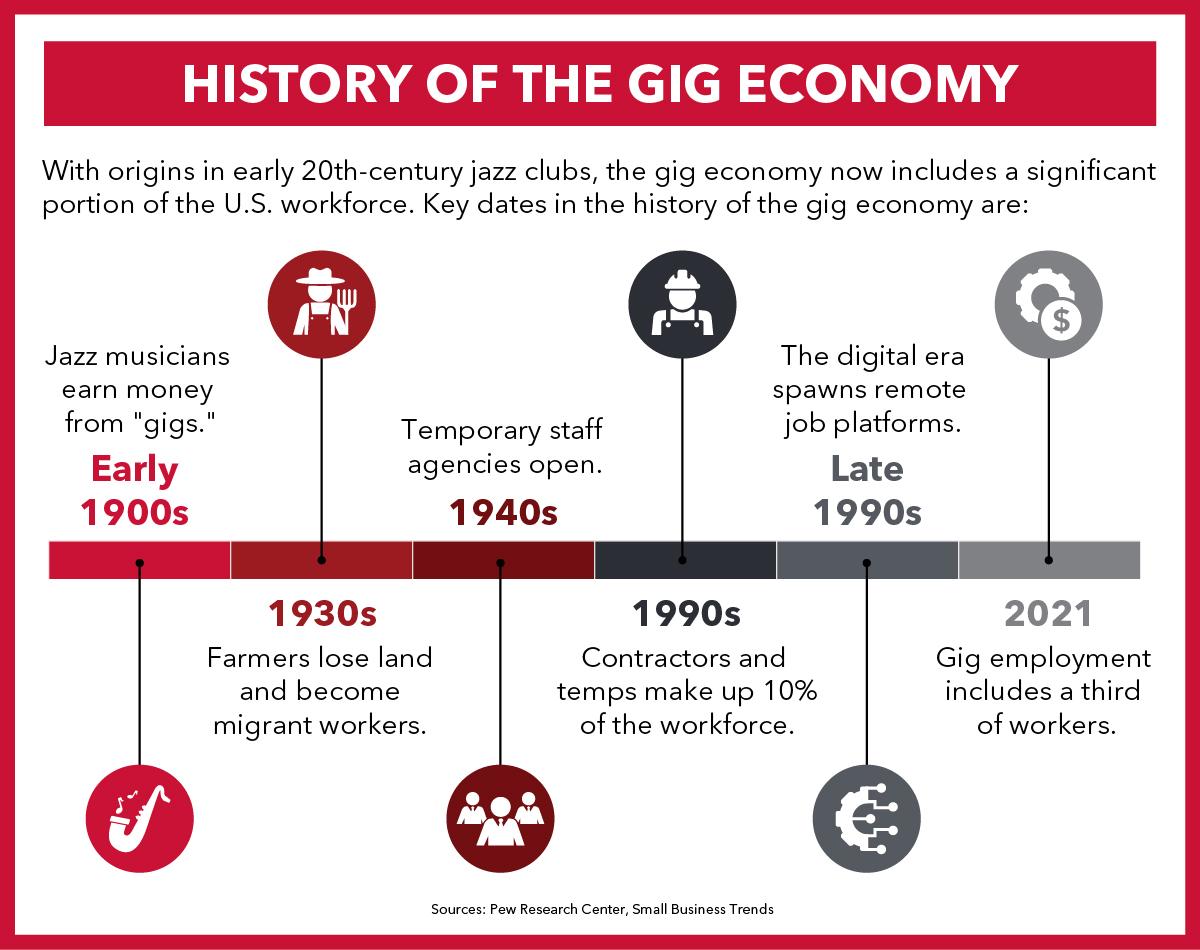
Preparing for the Gig Economy: Strategies for Success
As we navigate the evolving landscape of work, the gig economy is becoming an increasingly significant component of our professional lives. With more individuals opting for freelance and contract work, it’s essential to adapt and thrive in this new environment. Here are some effective strategies to position yourself for success in the gig economy:
- Embrace Lifelong Learning: The gig economy demands a diverse skill set. Invest time in continuous education—whether through online courses, workshops, or certifications. Staying current with industry trends will give you a competitive edge.
- Build a Personal Brand: Your online presence is crucial. Create a professional website or portfolio showcasing your work and expertise. Use social media platforms to engage with your audience and network within your industry.
- Diversify Your Income Streams: Relying on a single gig can be risky. Explore multiple income sources by taking on various projects or combining freelance work with passive income opportunities, such as affiliate marketing or digital products.
- Network Effectively: Networking is vital in the gig economy. Attend industry-related events, join online communities, and connect with fellow freelancers. Building relationships can lead to new opportunities and collaborations.
- Stay Organized: Managing projects and finances is crucial when juggling multiple gigs. Use tools like project management software and financial apps to track your workload and earnings efficiently.
- Understand Your Legal Obligations: Familiarize yourself with tax implications and legal responsibilities as a freelancer. Consider consulting with a legal expert or accountant to ensure compliance and proper financial management.
Preparing for the gig economy is not just about adapting to new work styles; it’s also about harnessing the power of technology and community. By taking proactive steps now, you can position yourself for long-term success in this dynamic landscape.
| Strategy | Benefits |
|---|---|
| Embrace Lifelong Learning | Stay relevant and competitive |
| Build a Personal Brand | Attract clients and showcase expertise |
| Diversify Income Streams | Reduce financial risk |
| Network Effectively | Access new opportunities |
| Stay Organized | Improve efficiency and productivity |
| Understand Legal Obligations | Avoid potential pitfalls |
By implementing these strategies, you can not only survive but thrive in the gig economy. Embrace the flexibility it offers while maintaining a proactive approach to managing your career. The future of work is here, and it’s time to seize the opportunities it presents!
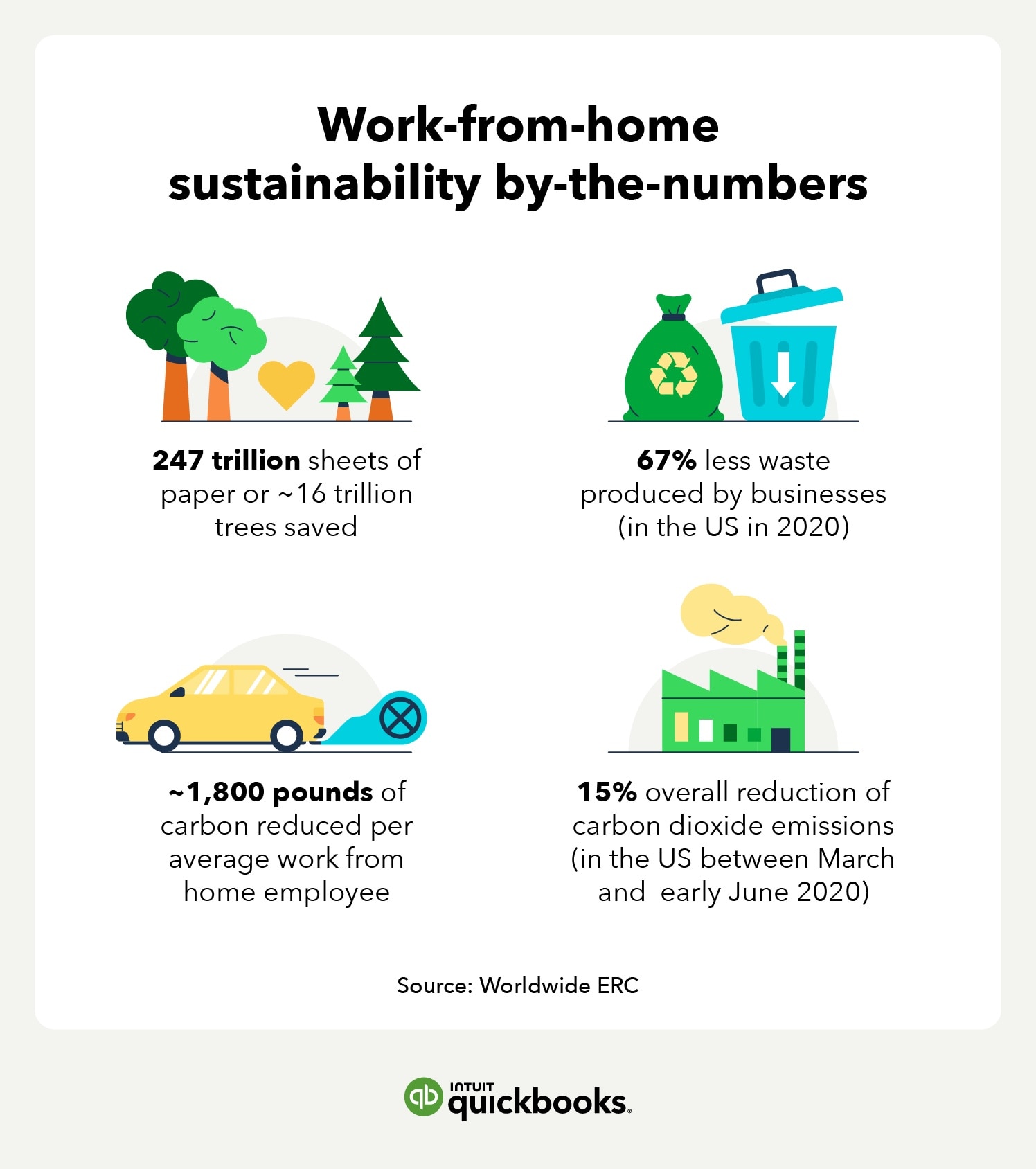
Sustainable Work Practices: Aligning with Global Goals
As the world shifts towards a more sustainable future, businesses are increasingly recognizing the need to align their work practices with global goals. This alignment is not just a trend; it’s a necessity for organizations looking to thrive in an evolving market. Adopting sustainable work practices not only enhances corporate responsibility but also drives innovation and efficiency in the workplace.
One of the most significant ways organizations can contribute to sustainability is by embracing remote and flexible work options. By reducing the need for physical office space and minimizing commuting, companies can significantly lower their carbon footprints. Additionally, allowing employees to choose their work environments can lead to higher job satisfaction and productivity.
Collaboration tools play a crucial role in supporting sustainable practices. Tools that facilitate communication and project management can help teams operate effectively regardless of their physical location. This fosters a culture of collaboration while reducing travel and resource consumption. Consider implementing platforms that offer:
- Real-time messaging
- Video conferencing
- Shared document editing
- Task management features
Another key aspect of sustainable work practices is the emphasis on eco-friendly office supplies and technology. Companies can choose products that are made from recycled materials or are energy efficient. Transitioning to digital documentation can also significantly reduce paper waste. Here’s a quick comparison of traditional versus sustainable office supplies:
| Traditional Supplies | Sustainable Alternatives |
|---|---|
| Plastic binders | Recycled cardboard folders |
| Single-use plastic pens | Refillable pens |
| Standard paper | FSC-certified or recycled paper |
Moreover, organizations should prioritize employee wellness as part of their sustainable strategy. Healthy employees contribute to a healthier workplace and community. Implementing wellness programs that promote physical and mental health can lead to lower absenteeism and higher morale. Consider initiatives such as:
- Access to mental health resources
- Fitness challenges or gym memberships
- Flexible hours to accommodate personal wellness
Lastly, establishing a culture of continuous improvement is essential for adapting to the changing landscape of sustainability. Encourage employees to share ideas for more sustainable practices within the organization. Regularly review and adjust company policies to ensure they align with evolving global standards. This approach not only promotes engagement among team members but also positions the company as a leader in sustainability.
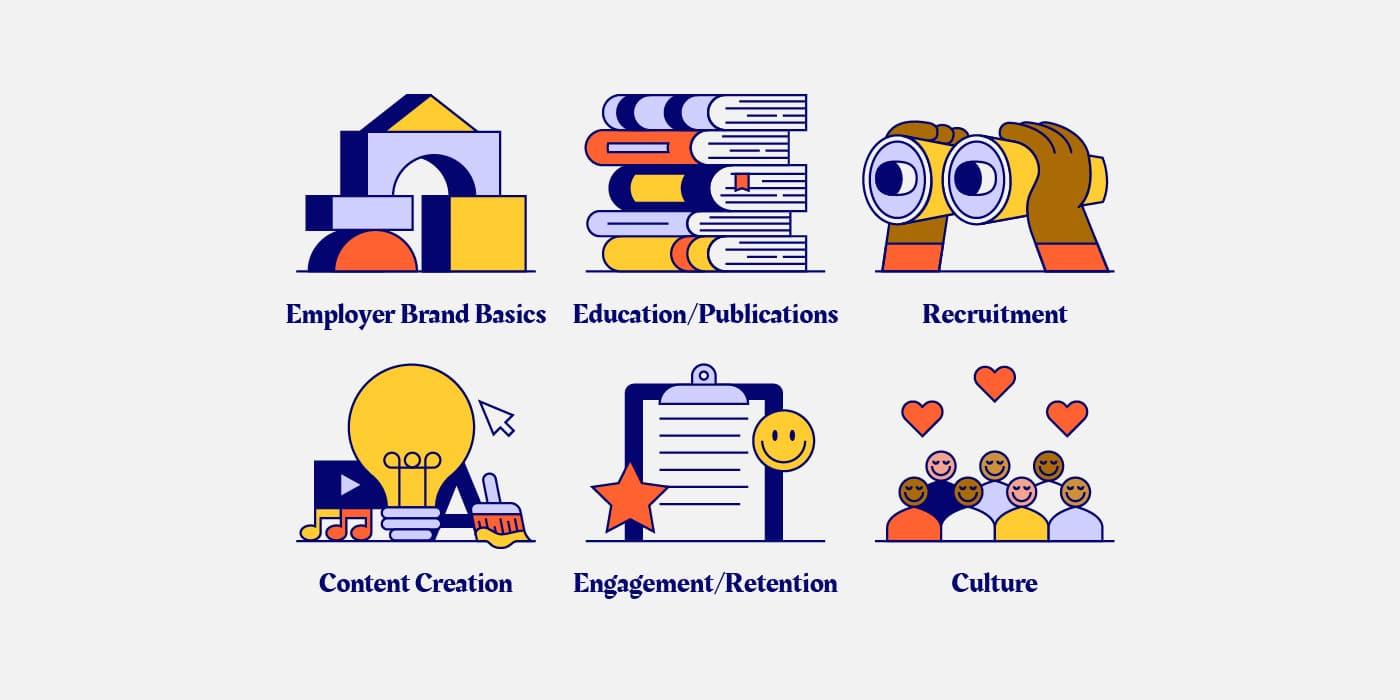
Building a Strong Employer Brand in a Competitive Market
In today’s fast-paced job market, establishing a strong employer brand is no longer just an advantage; it’s essential. As organizations vie for top talent, how you present your company matters more than ever. A compelling employer brand not only attracts candidates but also aids in employee retention, boosting morale and productivity.
To build a powerful employer brand, start by clearly defining your company values. Make these values known across all platforms—your website, social media, and job postings. When potential employees see that their personal beliefs align with your company’s ethos, they are more likely to engage. Consider these elements:
- Transparency in communication
- Commitment to diversity and inclusion
- Focus on employee development
- Work-life balance initiatives
Next, leverage the power of employee testimonials. Authentic voices from your current team can significantly enhance your credibility. Encourage employees to share their experiences through blogs, videos, or social media posts. This not only humanizes your brand but also resonates with job seekers on a personal level. Consider creating a dedicated section on your website for these testimonials.
Your online presence is another critical facet of employer branding. Ensure that your social media profiles reflect your company culture. Post content that showcases team events, community involvement, and employee achievements. This helps potential candidates visualize what it’s like to work for you. Utilize platforms like LinkedIn, Twitter, and Instagram effectively:
- Engage with followers regularly
- Highlight innovative projects
- Share industry insights and trends
Moreover, consider investing in a well-crafted career page on your website. This should serve as a gateway for job seekers to learn about your company. Include information about your mission, vision, and culture. A table showcasing the benefits and perks offered can also add value:
| Benefit | Description |
|---|---|
| Flexible Work Hours | Encouraging a healthy work-life balance. |
| Professional Development | Offering courses and workshops for skill enhancement. |
| Health and Wellness Programs | Supporting physical and mental well-being. |
keep in mind that your employer brand is a continuous effort. Regular feedback from employees, understanding their needs, and adapting to changes in the workforce are vital. Conduct surveys, hold focus groups, and be open to making adjustments based on employee input. This iterative process will solidify your reputation and make you a desirable destination for talent.

Harnessing the Power of Analytics for Workforce Planning
In today’s rapidly evolving work environment, the ability to make informed decisions about your workforce is more critical than ever. Organizations can no longer rely on gut feelings or outdated models; instead, they must embrace analytics as a foundational element of their workforce planning strategy. By leveraging data, companies can gain valuable insights into employee performance, productivity, and even potential turnover, ultimately enhancing their strategic planning efforts.
Data-Driven Insights are transforming how organizations approach workforce management. By analyzing historical data, companies can forecast future staffing needs, identify skill gaps, and optimize workforce allocation. Advanced analytics tools allow HR teams to segment data by various factors, including department, role, and location, providing a comprehensive view of the workforce landscape.
Consider the following areas where analytics can significantly impact decision-making:
- Workforce Optimization: Use predictive analytics to determine the ideal number of employees needed for various projects.
- Employee Engagement: Analyze feedback and performance data to identify trends in employee satisfaction and retention.
- Skill Gap Analysis: Identify the skills in demand and plan targeted training to fill workforce gaps.
One effective approach to harnessing the power of analytics is to establish a workforce analytics dashboard. This tool can provide real-time data visualization, enabling HR leaders to monitor key performance indicators (KPIs) such as turnover rates, employee satisfaction scores, and productivity levels. By having this information at their fingertips, leaders can swiftly make informed decisions that align with organizational goals.
| Analytics Area | Benefits |
|---|---|
| Recruitment | Improved candidate sourcing and selection processes. |
| Performance Management | Data-backed evaluations to enhance employee development. |
| Retention Strategies | Identification of high-risk employees and proactive engagement. |
Furthermore, integrating workforce analytics with other business intelligence tools can offer deeper insights. Companies that connect HR data with financial, sales, and operational data can create a holistic view that informs everything from budget allocations to market strategy. This integration fosters a culture of data-driven decision-making across the organization.
As you look to the future, consider investing in upskilling your HR team on data analytics. Providing training in analytical skills or partnering with data specialists can drastically improve the quality of insights derived from your workforce data. Empowered HR professionals will drive impactful strategies that not only enhance productivity but also contribute to a more engaged and satisfied workforce.
Frequently Asked Questions (FAQ)
Q&A: 11 Future of Work Trends to Watch (And How to Prepare)
Q: What are some key trends shaping the future of work?
A: Great question! The future of work is evolving rapidly, and some key trends to watch include remote work becoming the norm, increased reliance on automation and AI, a focus on employee well-being, and the rise of the gig economy. Each of these trends is transforming how we think about work, collaboration, and productivity.
Q: Why is remote work here to stay?
A: The pandemic taught us that many jobs can be done from anywhere! Companies found that remote work boosts productivity and employee satisfaction. As a result, many organizations are adopting hybrid models, allowing employees to choose where they work. If you’re a business leader, consider investing in the right tools and technologies to support remote collaboration.
Q: How will automation and AI impact jobs?
A: Automation and AI are game-changers! They can handle repetitive tasks, freeing up human workers to focus on more strategic and creative efforts. However, this also means that some jobs may become obsolete. It’s essential to reskill and upskill your workforce to thrive in this new landscape. Embrace lifelong learning to stay competitive.
Q: What does a focus on employee well-being look like?
A: A focus on well-being is about more than just benefits; it’s about creating a supportive work environment. This might include mental health resources, flexible hours, and a culture that prioritizes work-life balance. Employers who genuinely care about their employees’ well-being will see improved morale and productivity. As an employee, advocate for your needs and explore what well-being initiatives your organization offers.
Q: Can you explain the rise of the gig economy?
A: Absolutely! The gig economy allows individuals to work on a freelance basis, providing flexibility and autonomy. This trend is fueled by technology that connects workers with opportunities. For businesses, tapping into this talent pool can lead to innovative solutions and cost savings. As a gig worker, focus on building a strong network and personal brand to attract clients.
Q: How can companies prepare for these trends?
A: Preparation is key! Companies should invest in technology that supports remote collaboration and automation. Additionally, fostering a culture of continuous learning through professional development opportunities will be crucial. Engage with employees to understand their needs and preferences, ensuring that your workplace is adaptable and resilient.
Q: What role does diversity and inclusion play in the future of work?
A: Diversity and inclusion are paramount. A diverse workforce brings varied perspectives, sparking innovation and creativity. Companies that prioritize D&I will not only attract top talent but also cultivate a more engaged workforce. As an employee, champion initiatives that promote inclusivity within your organization.
Q: How do these trends affect job seekers?
A: For job seekers, understanding these trends is vital. Tailor your skills to match the demands of the evolving job market. Emphasize your adaptability, tech-savviness, and ability to work collaboratively, whether remotely or in-person. Networking and continuous learning will also give you an edge in a competitive landscape.
Q: Is it too late for businesses to adapt?
A: Not at all! It’s never too late to start adapting. While some companies may have been slow to change, there are always opportunities to innovate and improve. Begin by assessing your current practices and identifying areas for enhancement. Small, incremental changes can lead to significant improvements over time.
Q: How can employees take charge of their careers in this changing landscape?
A: Employees can take charge by staying informed about industry trends and being proactive in their professional development. Seek out new skills, network with peers, and be open to new opportunities, whether within your current organization or elsewhere. Embrace change as a chance to grow and evolve in your career!
Q: What’s the bottom line for the future of work?
A: The future of work is all about adaptability, collaboration, and well-being. By staying ahead of these trends and preparing for what lies ahead, both employees and employers can create a thriving work environment that meets the needs of today and tomorrow. Embrace the change, and get ready to thrive in the future of work!
The Conclusion
As we wrap up our exploration of the 11 future of work trends to watch, it’s clear that the workplace is on the brink of a remarkable transformation. The changes we’ve discussed aren’t just fleeting fads; they represent a shift in how we think about work, collaboration, and productivity. Embracing these trends isn’t just about keeping up with the times—it’s about positioning yourself and your organization for success in an ever-evolving landscape.
So, what’s next? Start small by integrating some of these ideas into your daily routine or workplace culture. Whether it’s adopting flexible work arrangements, investing in upskilling opportunities, or leveraging technology to enhance collaboration, every step counts. Don’t wait for the future to arrive—be proactive and lead the charge towards a more innovative and inclusive work environment.
Remember, the future of work isn’t something that just happens to us; it’s something we actively shape. So, let’s get started on building a workplace that not only meets the demands of tomorrow but also inspires and empowers us all today. The future is bright, and it’s up to you to make it happen!




